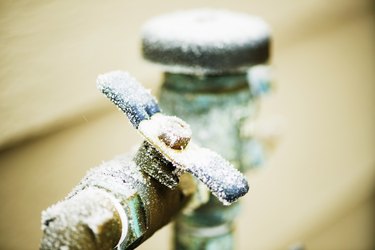Preventing Frozen Pipes in Cold Weather: Pro Tips
Preventing Frozen Pipes in Cold Weather: Pro Tips
Blog Article
Were you trying to find tips concerning How to prepare your home plumbing for winter weather?

Winter can damage your plumbing, especially by freezing pipelines. Below's exactly how to avoid it from happening and what to do if it does.
Introduction
As temperatures drop, the risk of frozen pipes rises, potentially bring about costly repair services and water damages. Understanding exactly how to stop frozen pipelines is critical for home owners in chilly climates.
Comprehending Icy Pipelines
What causes pipelines to ice up?
Pipelines ice up when revealed to temperature levels listed below 32 ° F (0 ° C) for extended periods. As water inside the pipes ices up, it increases, taxing the pipeline wall surfaces and possibly causing them to rupture.
Dangers and damages
Icy pipelines can result in water supply disturbances, residential property damages, and expensive repairs. Burst pipes can flooding homes and create extensive architectural damage.
Indicators of Frozen Pipeline
Determining frozen pipelines early can prevent them from rupturing.
How to recognize frozen pipelines
Search for lowered water flow from faucets, uncommon smells or noises from pipes, and visible frost on revealed pipes.
Prevention Tips
Shielding vulnerable pipes
Wrap pipelines in insulation sleeves or make use of warmth tape to shield them from freezing temperature levels. Focus on pipelines in unheated or external areas of the home.
Heating strategies
Maintain indoor spaces properly heated, especially areas with plumbing. Open closet doors to permit warm air to distribute around pipelines under sinks.
Protecting Outdoor Pipes
Yard hoses and outside taps
Separate and drain yard tubes prior to wintertime. Install frost-proof spigots or cover outdoor taps with shielded caps.
What to Do If Your Pipelines Freeze
Immediate activities to take
If you think icy pipes, maintain taps available to eliminate pressure as the ice thaws. Make use of a hairdryer or towels soaked in hot water to thaw pipes gradually.
Long-Term Solutions
Architectural adjustments
Take into consideration rerouting pipes far from exterior wall surfaces or unheated locations. Include additional insulation to attic rooms, cellars, and crawl spaces.
Updating insulation
Purchase high-grade insulation for pipelines, attic rooms, and walls. Proper insulation aids preserve consistent temperatures and minimizes the threat of icy pipelines.
Verdict
Protecting against icy pipelines needs proactive measures and quick reactions. By understanding the reasons, indicators, and preventive measures, home owners can shield their pipes during winter.
6 Proven Ways to Prevent Frozen Pipes and Protect Your Home
Disconnect and Drain Garden Hoses
Before winter arrives, start by disconnecting your garden hoses and draining any remaining water. Close the shut-off valves that supply outdoor hose bibs and leave the outdoor faucet open to allow any residual water to drain. For extra protection, consider using faucet covers throughout the colder months. It’s also important to drain water from any sprinkler supply lines following the manufacturer’s directions.
Insulate Exposed Pipes
Insulating your pipes is an effective way to prevent freezing. Pipe insulation is readily available at home improvement stores and is relatively inexpensive. Pay close attention to pipes in unheated areas such as the attic, basement, crawl spaces, or garage. Apply foam insulation generously to create a buffer against the cold. You can also wrap your pipes in heat tape or thermostat-controlled heat cables for added warmth.
Seal Air Leaks
Inspect your home for any cracks or openings that could let in cold air. Seal any holes around the piping in interior or exterior walls, as well as the sill plates where your home rests on its foundation. Additionally, make sure to keep your garage door closed unless you’re entering or exiting. Leaving it open creates a significant air leak that can lead to frozen pipes.
Allow Warm Air Circulation
During cold snaps, it’s essential to allow warm air to circulate evenly throughout your home. Leave interior doors ajar to promote better airflow. Open kitchen and bathroom cabinets to help distribute heat consistently around the rooms. If you have small children or pets, be sure to remove any household chemicals or potentially harmful cleaners from open cabinets for safety.
Let Faucets Drip
A small trickle of water can make a big difference in preventing ice formation inside your pipes. When temperatures drop significantly, start a drip of water from all faucets served by exposed pipes. This continuous flow helps prevent the water from freezing. Additionally, running a few faucets slightly can relieve pressure inside the pipes, reducing the chances of a rupture if the water inside does freeze.
https://choateshvac.com/6-proven-ways-to-prevent-frozen-pipes-and-protect-your-home/

I was shown that write-up about Prevent Frozen Pipes from a pal on our other web blog. Are you aware of anybody else who is fascinated about the subject? Why not promote it. We truly appreciate your readership.
Schedule A Free Estimate Report this page